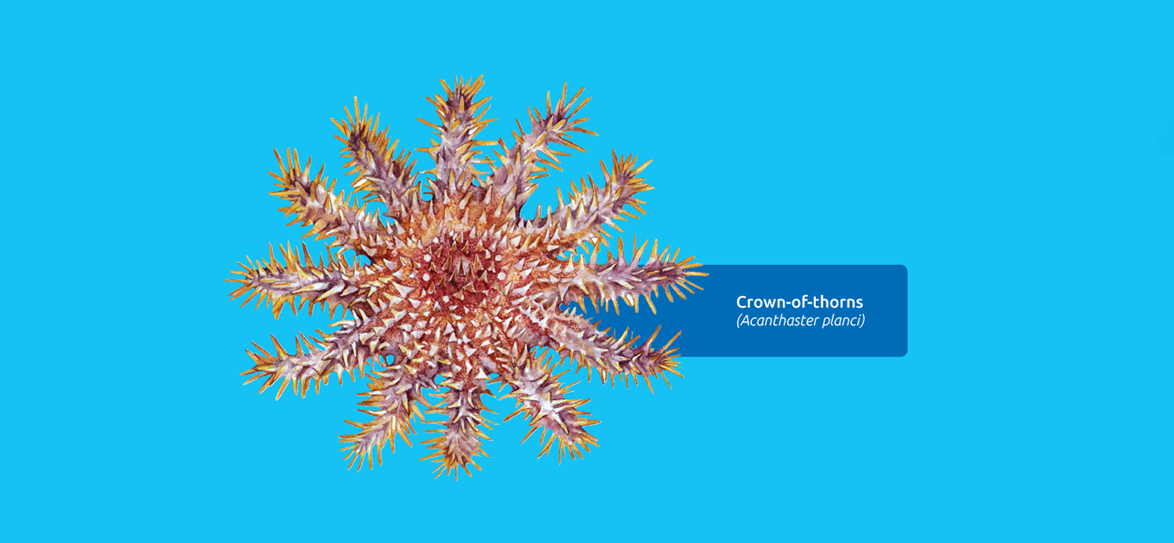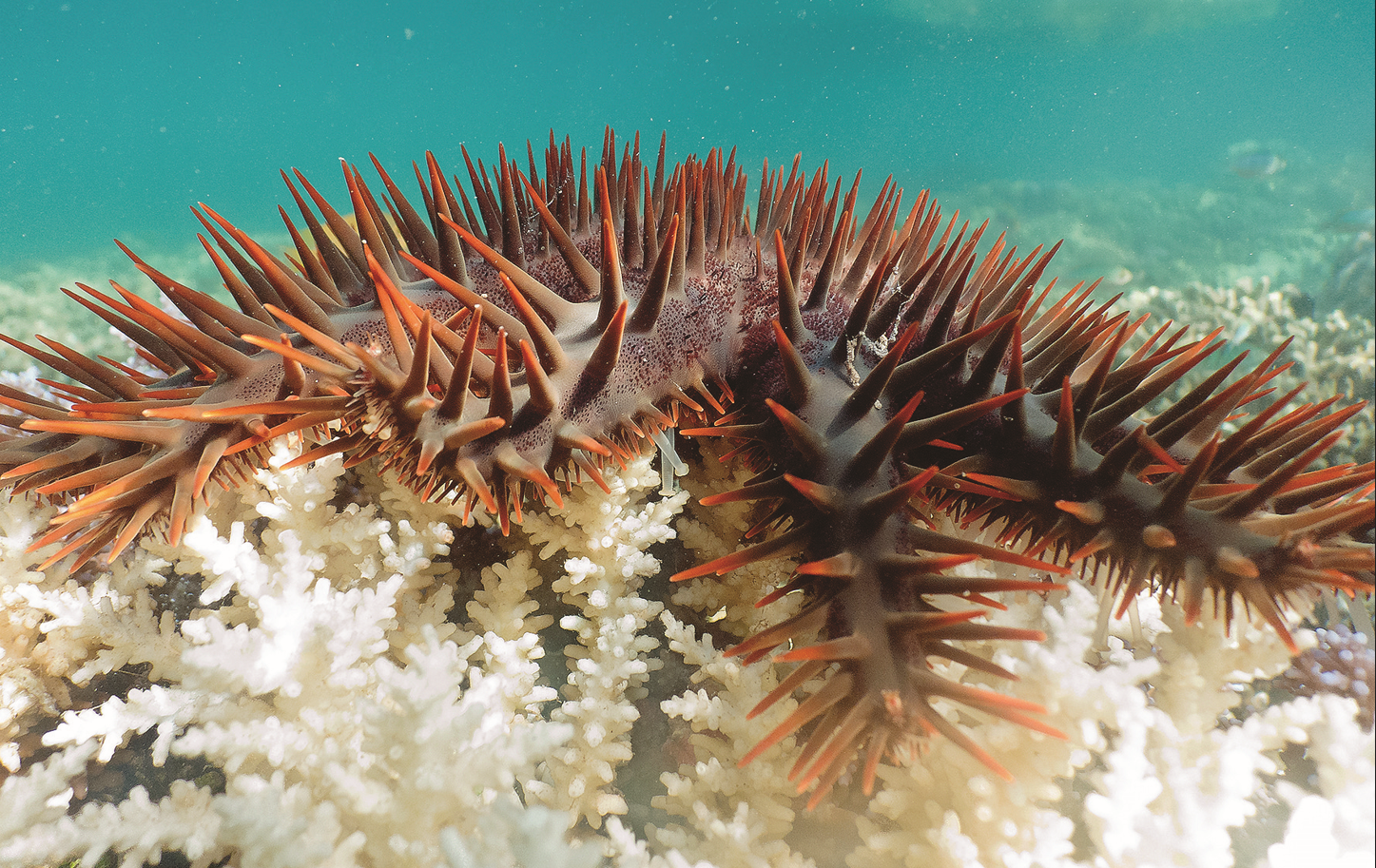Image: © Pascal Dumas, SPC
To gain access to full information on crown-of-thorns, download the information sheet produced by the LMMA Network and SPC.
Community management steps
Very large populations or ‘outbreaks’ of crown-of-thorns will damage large areas of coral. These outbreaks can occur naturally but may also be caused by human activities – such as by allowing sewage to enter the sea and by catching too many of their predators. If you have noticed ‘outbreaks’ of crown-of-thorns, here are the steps the community can follow:
Assess the number of crown-of-thorns
Numbers of fewer than four individuals seen in a five minute swim in a straight line across a coral reef appear to cause no extensive damage to corals and no action is necessary. However, if numbers are greater than this, immediate action should be taken as follows.
Choose the area to be cleared of crown-of-thorns
A small area, between 2 to 4 hectares, is a realistic target area and may include a community’s fishing area, a no-take area, an area visited by tourist divers or any area with high coral diversity. If tourists visit the area, their help could be enlisted.
Organise a large number of collectors
People should be available on the assigned day and bring spears or long-handled tongs to collect the crown-of-thorns. Collection by waders may be risky unless the water is very clear - collection by swimmers with diving masks is often safer.
Collect crown-of-thorns and transfer them to shore
Collectors should move in a line across the area and take care not to damage corals as they collect crown-of-thorns and place them in floating bins or small boats for transfer to shore.
Dispose of crowns-of-thorns on shore
The crown-of-thorns can be used as a fertiliser by placing them in a shallow ditch, covering them with earth and then planting bananas or citrus trees.
Outbreaks may be related to high nutrient loads in the sea
Assistance from relevant authorities should be sought to address any problems with wastewater management and erosion control in the local area.
Good to know: method of eradication
Attempts to control outbreaks of crown-of-thorns have included injecting them with chemicals such as sodium bisulphate. However, hand collection of crown-of-thorns is the preferred method of eradication when there is sufficient labour.
Some species

The crown-of-thorns, Acanthaster planci, is a large greenish brown starfish or sea star with up to 23 arms. It reaches a diameter of over 35 cm and is covered with sharp spines up to 5cm long. It occurs naturally on coral reefs throughout the Indo-Pacific Region.
The skin on the crown-of-thorns’ spines contains a toxin called saponin. When humans are ‘spiked’ (usually in the feet or lower legs while walking in shallow water) the effects may include intense pain, nausea and vomiting. Any spines should be carefully removed, and the injured part bathed in hot salty water and loosely bandaged. Antibiotic treatment may be required if the wound becomes infected.
Although there is no scientific evidence for its effectiveness, a common traditional remedy for a spiking is to hold the crown-of-thorns’ lower surface and mouth over the wound.
Crown-of-thorns prefer sheltered areas in lagoons and the deeper water along reef fronts. They move using the large number of small tube feet beneath their arms.
On coral, a crown-of-thorns pushes out its stomach to digest the coral polyps (the small animals that make up corals). After feeding, it moves on leaving the white dead skeleton of the coral.
When they are present in low numbers, crown-of-thorns prefer to eat the faster growing branching corals; this allows destroyed corals to be replaced more quickly and provides space for slower growing corals. When crown-of-thorns are present in large numbers, they also eat larger and slower-growing brain and boulder corals.
Predators of crown-of-thorns include large molluscs such as the giant triton and the helmet shell, as well as fish such as the humphead wrasse, and the starry puffer fish.
Crown-of-thorns have separate sexes and are able to reproduce at about two years of age when they are about 20 cm in diameter.
Females and males gather in groups and release eggs and sperm into the water through pores on the top of their bodies. A large female can produce many millions of eggs over the breeding season.
The fertilised eggs develop into larvae which spend from two to four weeks drifting in ocean currents. Very few, perhaps only one in a million, survive to settle on reefs, where they change into juveniles within two days.
Initially the juveniles feed on seaweed (coralline algae) but after six months, at a size of about 1 cm, they begin to feed on corals and may live for up to eight years
Related resources

To gain access to full information on crown-of-thorns, download the information sheet.
